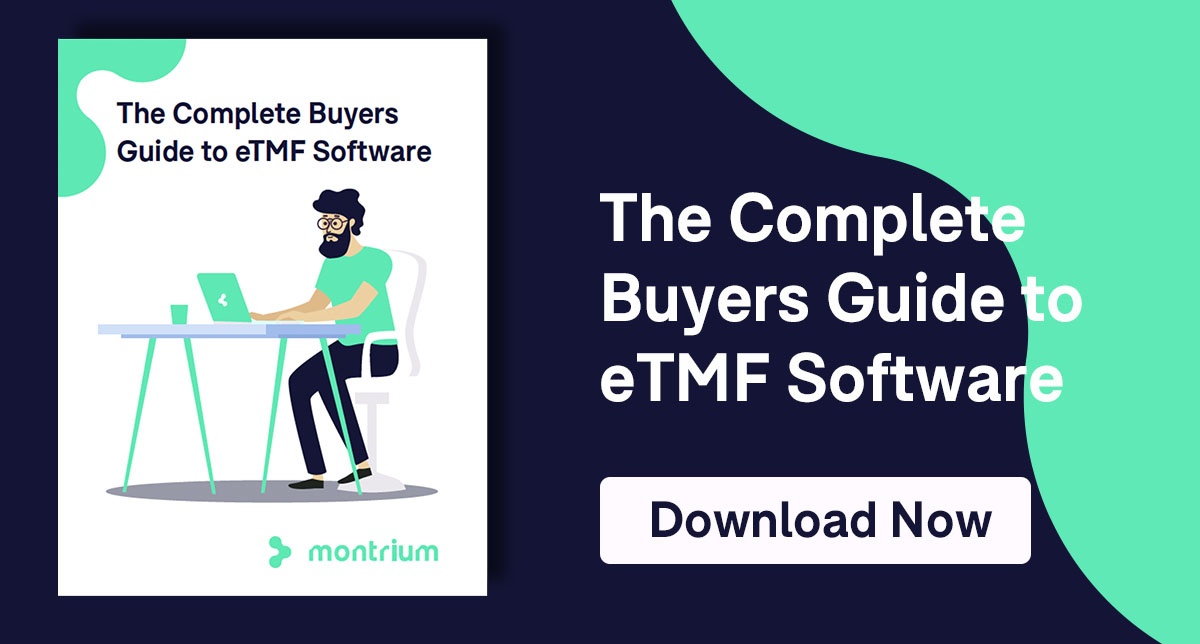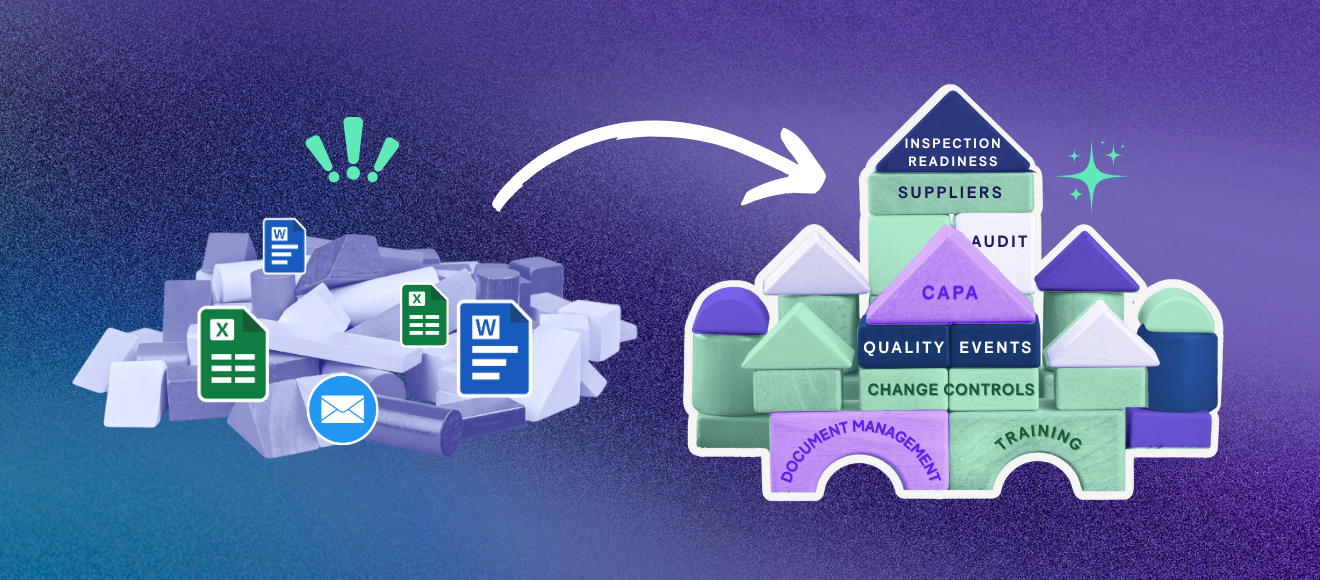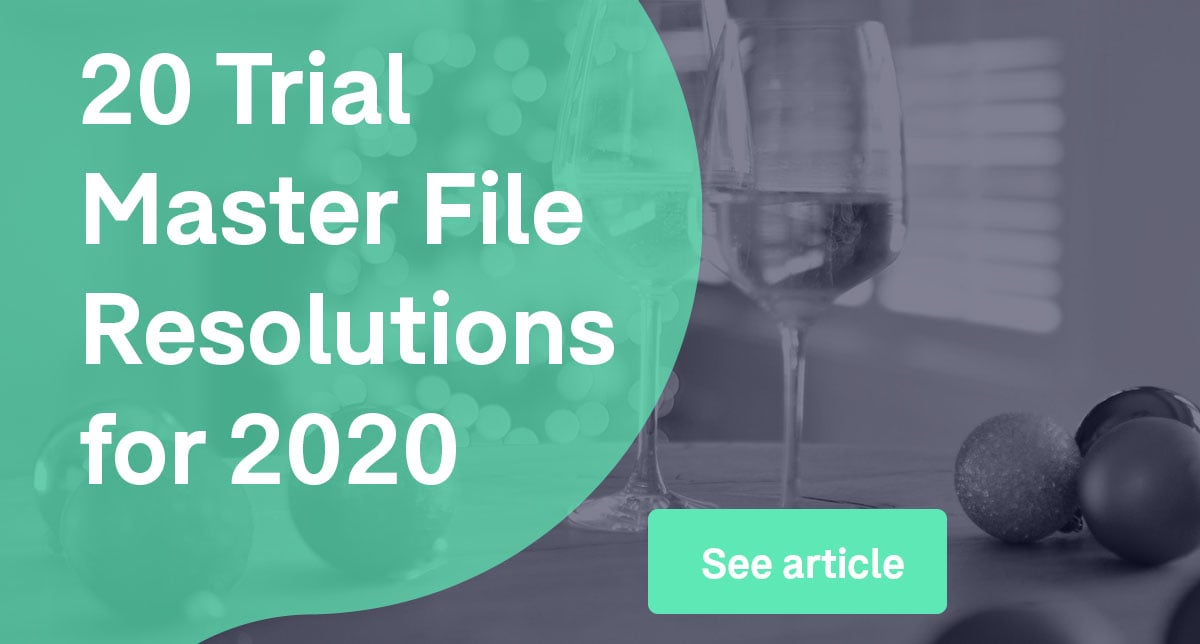%20Share%20Best%20Practices%20for%20Improving%20TMF%20Quality.png)
“The only thing to do with good advice is to pass it on. It is never of any use to oneself.”
This famous quote by Oscar Wilde touches on the spirit of today’s discussion, where those with experience working as a Clinical Research Associate (CRA) will be sharing their advice for improving trial master file quality.
Otherwise known as trial monitors, CRAs have a lot of responsibility in actively managing and maintaining the Trial Master File of a clinical trial study. More and more, the CRA role is changing because of tools like electronic TMFs making remote accessibility, quality control, submissions, and other project management activities the current reality. With that being said, we wanted to go directly to the source on how to best manage a TMF environment that exceeds the inspector's expectations and sets trials up for success.
Whether you’re a newcomer to the life science industry looking to enhance your CRA training, or a CRA veteran searching for new insights or ways of managing your TMF - in a fast-paced clinical trial landscape, your peers truly are your best resource.
1. Dan Sfera on Maintaining a Standardized Filing System

Dan Sfera has been in the clinical research industry since 2005 and has worked as a CRA for 4 years and with clinical trials teams for 14 years. He also heads up the Clinical Trials Guru website where he discusses “Clinical Trials in Plain English” and is a co-founder of the CRA Academy.
When asked about best CRA practices for populating a quality TMF, Dan shares, “Especially for the in-house CRAs at a CRO who have big responsibilities with regards to TMF management, day-to-day activities like being careful where you upload certain clinical trial documents, sending them to specific email addresses based on site, study, form, etc. and managing correspondence are critical to maintaining inspection readiness.”
Continuing with the topic of in-house CRA filing, Dan explains, “A standardized system is key, good CRAs are organized and pay close attention to their naming convention and how their organizing emails. Naming conventions are vital when setting up the TMF in the beginning so that CRAs don't have to waste time searching and asking for document details and metadata. I often stress that naming conventions will solve 80% of the problems we're seeing, while the other piece is just filing in the correct folder.”
Dan discusses how active TMF management means that every day there’s a new regulatory document out or monitoring report/letter, you have it filed in your TMF within 48 hours of the document being released. “A big spike in document uploads and changes before an inspection can raise red flags for inspectors who want to see updated TMFs in real-time. For instance, if there was an update at 15:32 on site 3, you expect to see that change within 24 hours in the TMF.”
As for tools that can support CRAs in improving TMF quality, Dan shares, “An eTMF certainly makes it easier for larger studies with more sites to progress and automate administrative tasks that hinder your progress and distract CRA’s away from more important matters. The eTMF can be updated more quickly and is more reflective of current study activities, and this agile technology will help teams keep up with growing inspector expectations. Drag & Drop has changed document distribution for the better and pushed the document lifecycle to a faster pace. An eTMF also keeps people out of their email inbox, eliminates the burden of sending paperwork back-and-forth, a reality all too prevalent for studies today."
Dan continues, "For a lead in-house CRA, an eTMF can help save those crucial minutes that turn into hours when searching for one document. With a paper TMF and heavy email-sharing, even smaller studies can easily lose sight of the original sources when documents add up and duplication starts and paper docs at sites must be either photocopies or scanned and are not uploaded in a timely manner. This is a big problem for teams needing to comply with 21 CFR Part 11 audit trail requirements.”
2. Sherry Minor on the W’s of eTMF Planning

Sherry Minor is both a Contract CRA and Consultant, she has worked as a CRA for 12 years and contributed to clinical research for the past 20 years.
A key piece of advice that Sherry hit home in our conversation was that CRAs must remember to define the W’s - the What, Who, Where, and When – a vital exercise for TMF planning and improved quality.
Sherry explains, “The What stands for what is expected. We can’t just do a simple inventory of what is already in the TMF, but also what is expected for each unique study as each is different and documents always get missed. Who means the individuals responsible for filing and providing documents. Where is where those documents are filed and stored. When refers to the timelines for making sure these documents are in, in a timely manner and filed. Planning like this feeds into active TMF management and making sure that the inspection-readiness is consistently going to be there. We must remember that a TMF is a live environment. It’s a constant revolving process, rather than a check-up at the beginning and the end of the study. You should be able to reconstruct your trial at all times.”
In the larger picture, periodic QC reviews should be scheduled and carried out in order to make sure that the TMF quality is there, Sherry says, “When I do a QC and I look at my TMF and ISF, I need to know right up-front what clinical trial documents are expected and their defined quality. I ask myself whether those documents pass the test to get put into a TMF. With a paper TMF and trackers, it was a manual, cumbersome, time-consuming process for example when you have 500 documents and you must scan, index, send them and perform QC. With someone having 8-10 visits per month and a very complex study to manage, on top of changes in site personnel, multiple amendments, etc. - all these documents by paper had to be physically transported and imported into the TMF.”
Sherry remarked that as an industry, we must be open to change to new technologies like eTMF. “While there is a comfort in paper, this does pose a problem for teams that need to keep up with the industry. Having everything stored in one central area that can be accessed remotely makes it efficient for sponsors to go in and see documents, and it keeps everyone involved on their toes and results in the contribution of better-quality work. You have much more control of what’s being filed and can remove a lot of redundancy that way, it’s just so much simpler and cleaner.”
3. Dominic Bourdeau on Using a Master QC Checklist
.jpg?width=180&name=Dominic%20B%20(2).jpg)
Dominic Bourdeau has monitored Phase 1 to Phase 3 as well as observational studies in fields including rare disease, bone disorders, oncology, dermatology, and cardiology. At Clementia Pharmaceuticals, he worked to build the Table of Contents in their TMF for each study, in which he also had to adapt the ToC for each phase. Needless to say - Dominic is a great resource with a range of experiences to learn from.
On the topic of best practices for populating the TMF with essential clinical trial documents, Dominic shared that the key for TMF quality is to do periodic QC reviews of your TMF content. “Every time you reach a milestone or a new product commitment, teams should look to start a whole new QC process and identify what is in their TMF to ensure there are no missing documents. If there are gaps, CRAs will find it useful to create document placeholders to know what is still needs to be collected.”
With regards to how to keep the TMF from becoming disorganized, Dominic explains, “I always work with a master QC checklist. It functions as a resource that tells me everything needed in the TMF, as well as an audit trail of who’s filing and performing the QC. I also track milestones, for instance, each quarter we check that each document is still in the correct location without any duplicates, and the data is of top quality. This helps ensure that those working with different sites and vendors can minimize any gaps in the TMF.”
Dominic shares that preparedness and being detail-oriented also feeds into better TMF quality, “Before going on site, I make sure to check the action items from the previous monitoring visit (e.g. submissions, licenses about to expire, CVs older than 3 years) and create placeholders so that no critical documents are forgotten. CRAs that make sure everything is identified and filed according to a defined set of GCP standards help to keep TMF quality consistent across the board.”
On the topic of maintaining TMF quality for inspection readiness, Dominic notes that it’s important for CRAs to have the right QA team on board with them. “But more importantly, pro-active CRAs will prepare expected documents and placeholders to see those documents still missing, those that are in review, etc. An electronic TMF makes it easy for us to send documents and request for signatures, to move them along the document lifecycle.”
Since using an eTMF, Dominic shares that his team is better equipped to address the backlog of documents once had with indexing documents. “An eTMF helps me identify what’s missing right from a dashboard perspective and to create useful reports.”
And finally, Dominic says, “My advice for CRAs, especially new CRAs, would be to develop a good relationship with your site(s). This is key. By working as a team and getting everyone on board with goals and objectives – you will have better communication and you will see noticeable improvements in TMF quality.”
4. Ken Boudreault on Designing a Funnel System for TMF Filing

Ken Boudreault is a CRA with 15 years of professional experience in the clinical field, where he specializes in oncology and ophthalmology. His LinkedIn describes his guiding professional principle: to achieve study goals and milestones with high-quality standards and this certainly shines through in our discussion.
On the topic of managing studies with many individuals involved Ken says, “When you’re running a multi-million-dollar project in multiple countries, it’s difficult to get the same standards across the board. By having a documentation specialist on your team in charge of the TMF, providing feedback on quality during quarterly reviews using a QC checklist, this will set clinical teams up success.”
“Good TMF management clearly sets up what is to be expected as far as getting clinical trial documents from both a country level and a site level. These expected documents should be crystal clear. Additionally, teams should produce bi-weekly or at least monthly reports on what is complete and what’s missing. What’s also important is that the primary contact of each site is shared, such as a CTA who will follow up with CRAs on the pending documents,” Ken shares.
Moving on to the subject of how critical a balanced work environment can seriously impact the quality of a CRA's work, Ken explains, “In the CRO world, your bread and butter is the CRA. It all comes down to creating a healthy work environment to which people want to remain and contribute their best work. TMF quality is as good as the people who are going to work in it. Even if you have the greatest system in the world, if you have people working in it that are not well-versed on the requirements and standards each kind of document must adhere to, the quality result is not going to be good.”
Ken leaves us with his experience as to how a ‘funnel system’ can impact TMF quality. “Another way to have a good quality TMF is to ensure that the structure of the TMF makes it so that you limit the number of individuals that can review and post. I prefer that CRAs upload documents in the system, but then clinical teams have a narrow group of individuals filtering this and posting the documents where they need to go. From my experience, a funnel system like this works best where the CRAs submit their documents to a general repository, but a small group of individuals review them.”
Any CRAs out there reading? Share your best tips for enhancing your trial master file quality with the clinical community in the comments section below! 
Tamara Mitchell
Tamara is a Content Marketing Specialist on Montrium's Marketing team. She is passionate about useful and digestible writing on all things life science, enjoys reading your comments and likes to think she has the gift for gab.






%20is%20to%20make%20%23Quality%20an%20operating%20principle%20in%20your%20organization.png)



-1.png)




